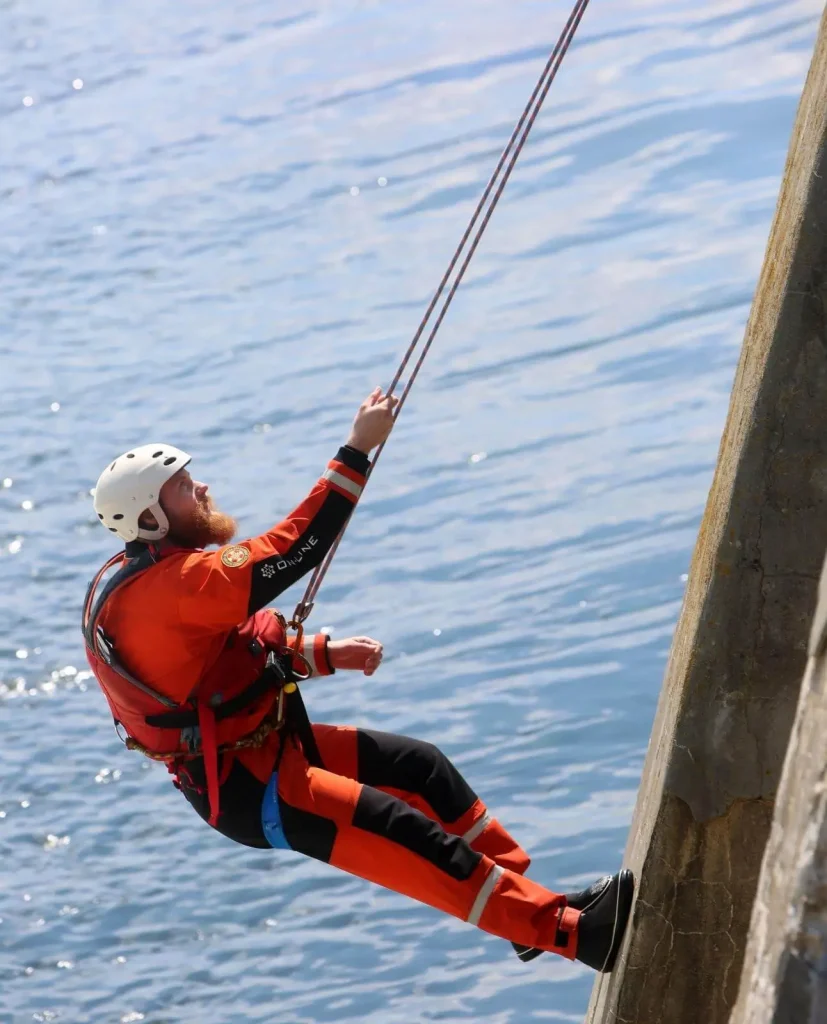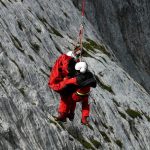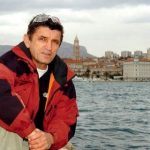In 2007, this Split-born CRMS instructor, dog handler, helicopter rescue trainer, and international Swiftwater and flood rescue instructor won the award ‘Pride of Croatia‘ for saving a four-year-old boy who had wandered off into the forest near his home. During the filming of Game of Thrones in Split, he served as the marine department member, ensuring all safety protocols were being implemented when working around the sea, and acted as a rowing instructor for some of the actors. He is proud to point out that in all of its 70 years, no CMRS member was seriously injured or died in an intervention, nor did a single person who they rescued.
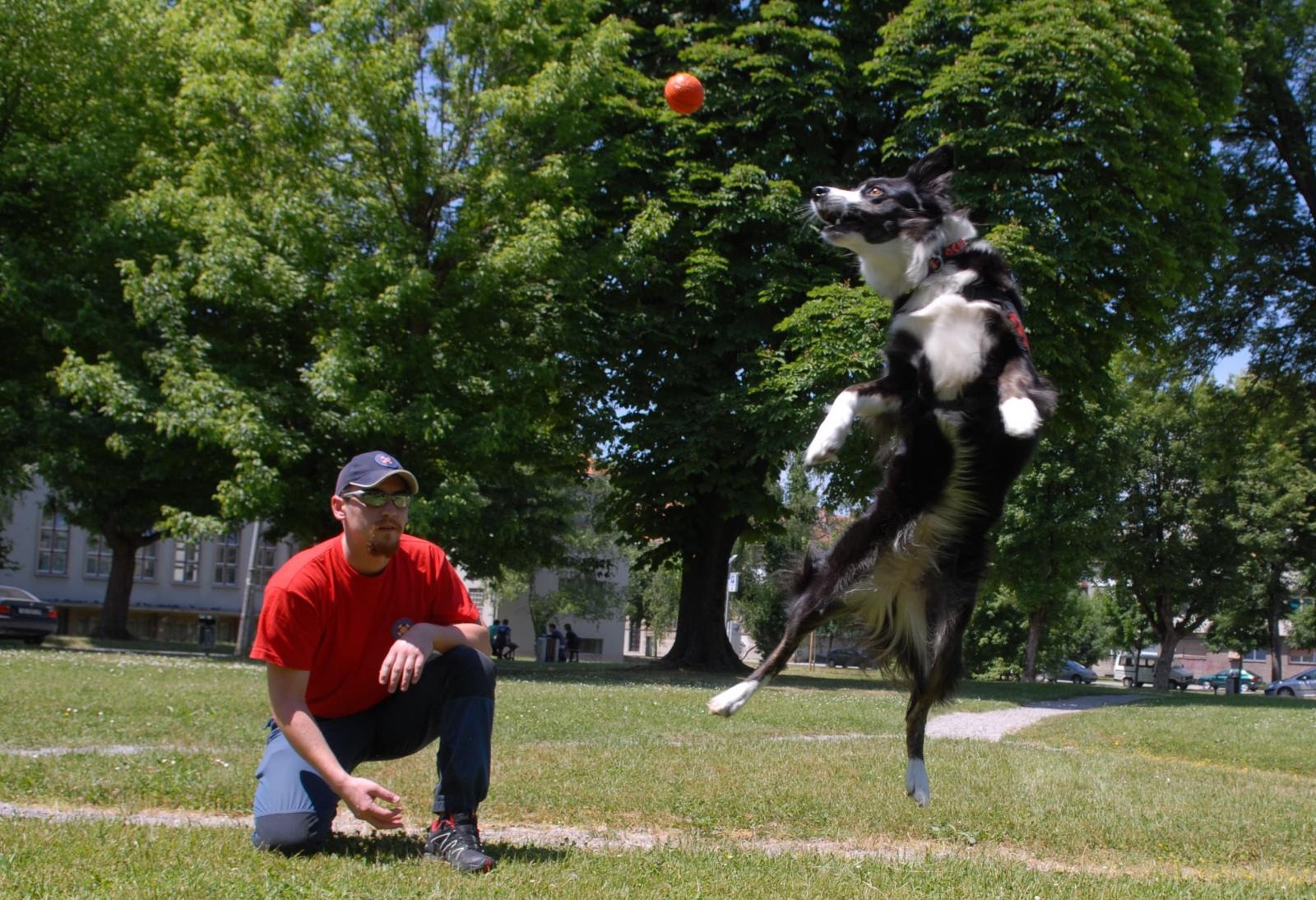
Josip Granić with Hosan, a Scottish border-collie who was involved in the rescue mission of a four-year-old boy in 2007. Hosan passed away in 2015. © Kristina Stedul Fabac/Pixsell
1. Can anyone join and become a member of CMRS? What does the process of admitting new members to CMRS look like?
In accordance with Croatian Mountain Rescue Service Statute, a potential candidate must get a recommendation of two mountain rescuers (there are several categories of members: rescuers, mountain rescuers, instructors, and so on), as mountain rescuers are, as a rule, experienced and long-term members of CMRS.
However, considering the workload and a wide variety of tasks of our organisation, we are also accepting members who had not necessarily been suggested by the aforementioned mountain rescuers.
Still, it’s important to emphasize that it is always CMR who initiates contact with potential members – and not the other way around. There are exceptions, of course, but, as a rule, we don’t accept applications.
So, the short answer would be that existing members nominate new members.
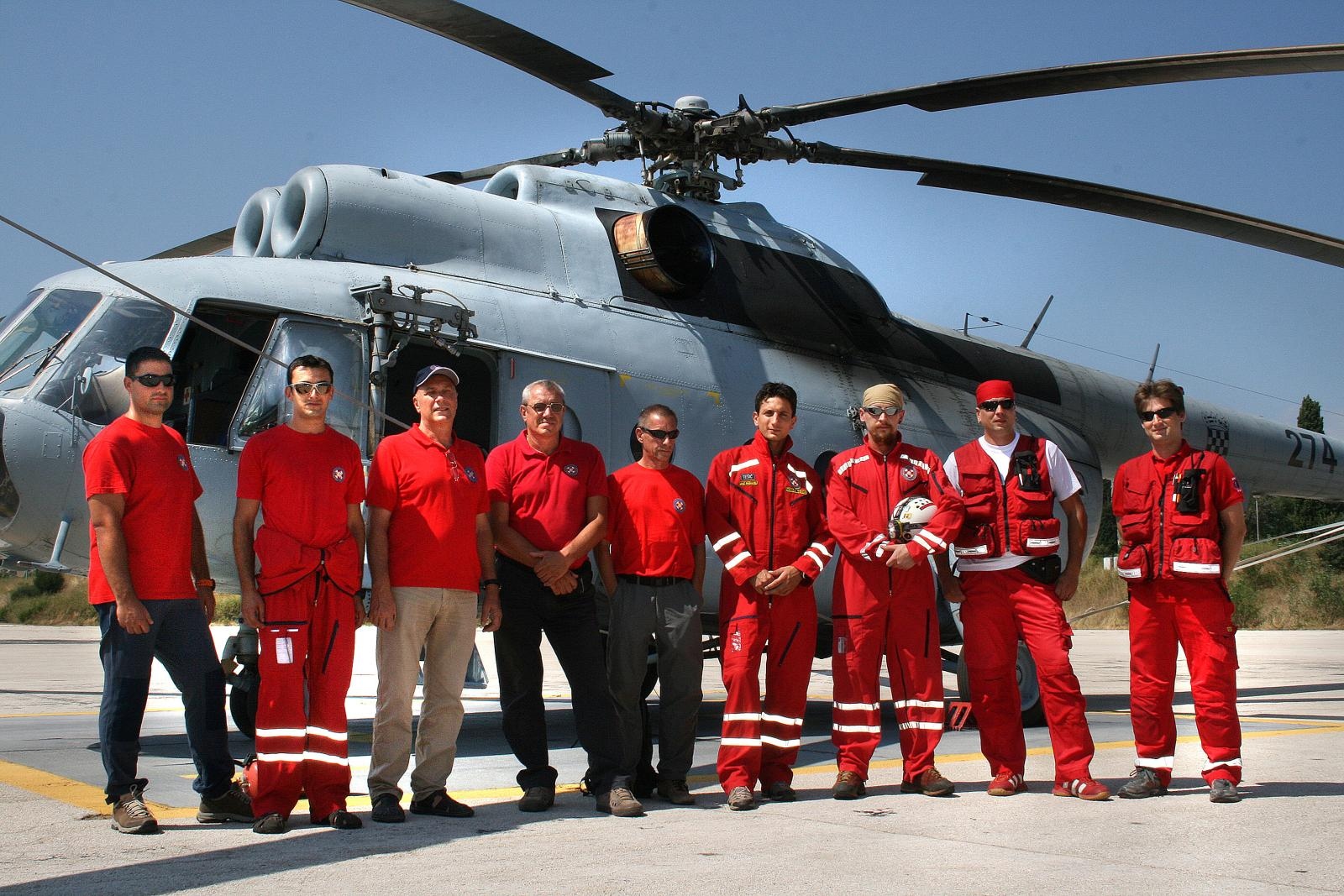
© Ivana Ivanovic/Pixsell
2. Who selects new members and according to what criteria? Are they required to have previous experience or certain qualifications?
Members are selected based on their CV – we look for specific activities which would make a person a useful addition to our organisation – hiking, speleology, alpinism, skiing – or specific knowledge we may need at the time – PR or IT skills. Those who had suggested the candidate also get a chance to tell us more about them and why they find them suitable for the position in question.
Then, all those who are present at a meeting – new members are selected at CMRS meetings – cast their vote, and the person is accepted as a member.
When it comes to essential skills we look for as an organisation (experience in hiking, alpinism, and so forth), the people we choose need to be exceptional in their field, and that generally goes for all other positions we require, such as IT experts, or medical professionals.
Then, they all go through our training which ideally lasts for two to two-and-a-half years.
There are many additional courses our members go through throughout their time with us. The process of learning never really ends for a CMRS member and all of us continually work on improving our knowledge and skills.
Our members need to be physically fit as well– we require a medical certificate which states that a person doesn’t suffer from any chronic illness which would prevent them from participating in any of our activities. And last but not least – we value and appreciate a person’s altruism and wish to do something for the benefit of the community.
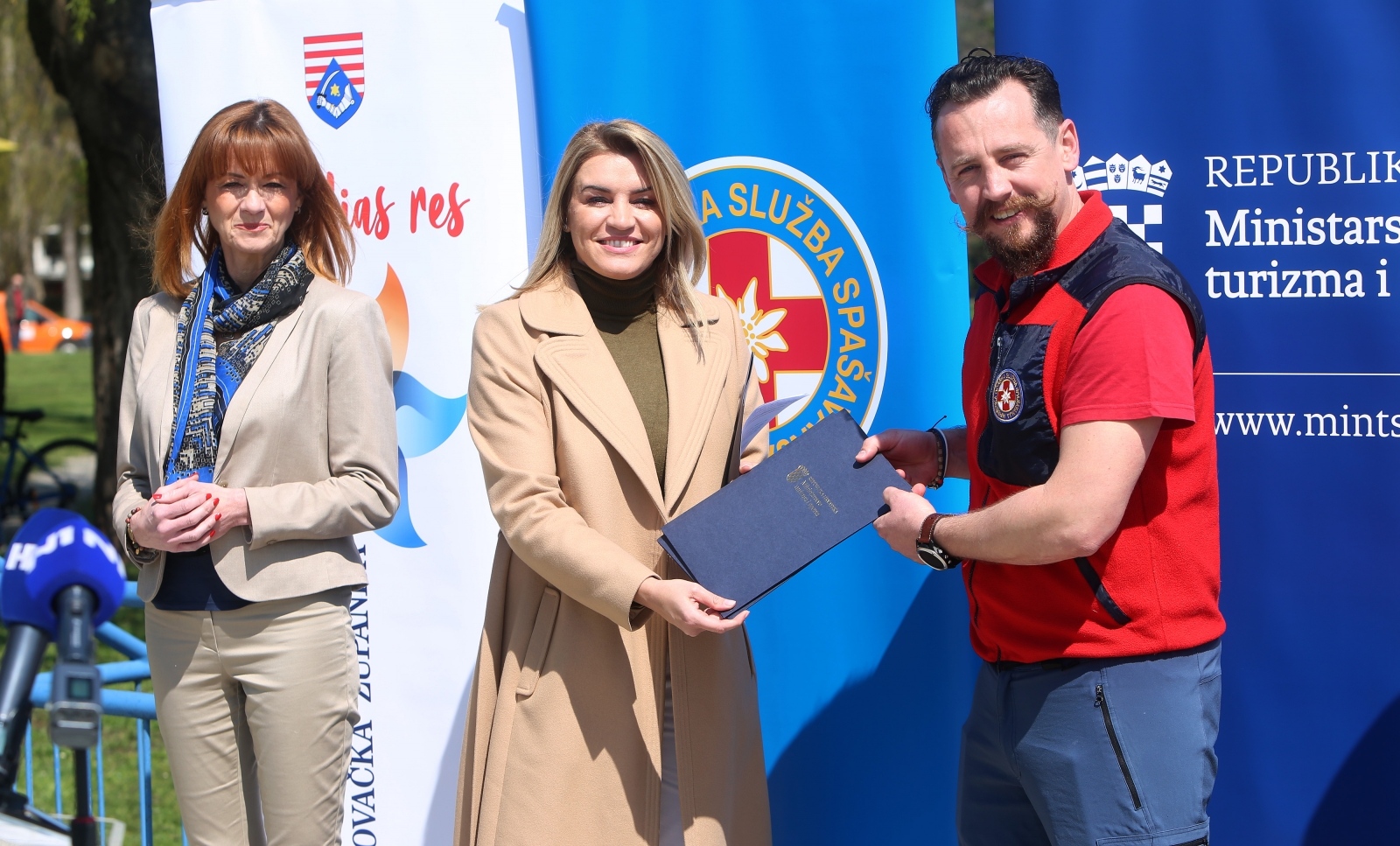
In April 2021, CMRS’ Karlovac station received funding from the Ministry of Tourism. © Kristina Stedul Fabac/Pixsell
3. CMRS is a nonprofit, volunteer organization. Members donate their time voluntarily, and the CMRS does not charge for its services.
So, how does CMRS finance itself?
Exactly. CMRS is a volunteer organisation that consists of twenty-five base stations all across Croatia. Most of the work we do is free, there is only a small number of specialized watches for which the members receive compensation in the form of coverage of their expenses.
Since CMRS is a public organisation, it is funded by the state budget – the state covers larger national actions and training, our work clothes, and so on.
The twenty-five base stations are financed by the units of local self-government in accordance with Law on Local and Regional Self-Government and Law on Civil Protection System.
4. Although CMRS is most heard about in the summer, the season for CMRS lasts all year long. What else does CMRS do besides rescue operations?
Our activities are defined by the law. Aside from rescue operations, we work on prevention programs. Some of it includes working in co-operation with mountaineering associations – we mark mountain hiking trails, make tourist trail guides and maps for hiking – this way, people get lost less frequently and also get a better experience of the non-urban areas – which are, to us, especially interesting. Then, there are prevention programs and courses for the general public, different public institutions, and so on.
We also organize educational courses for adventure tour operators and tour guides.
We are involved in a wide array of different activities and rescue operations, which catch the most media interest – nothing against it, of course – are merely the tip of an iceberg, so to say.
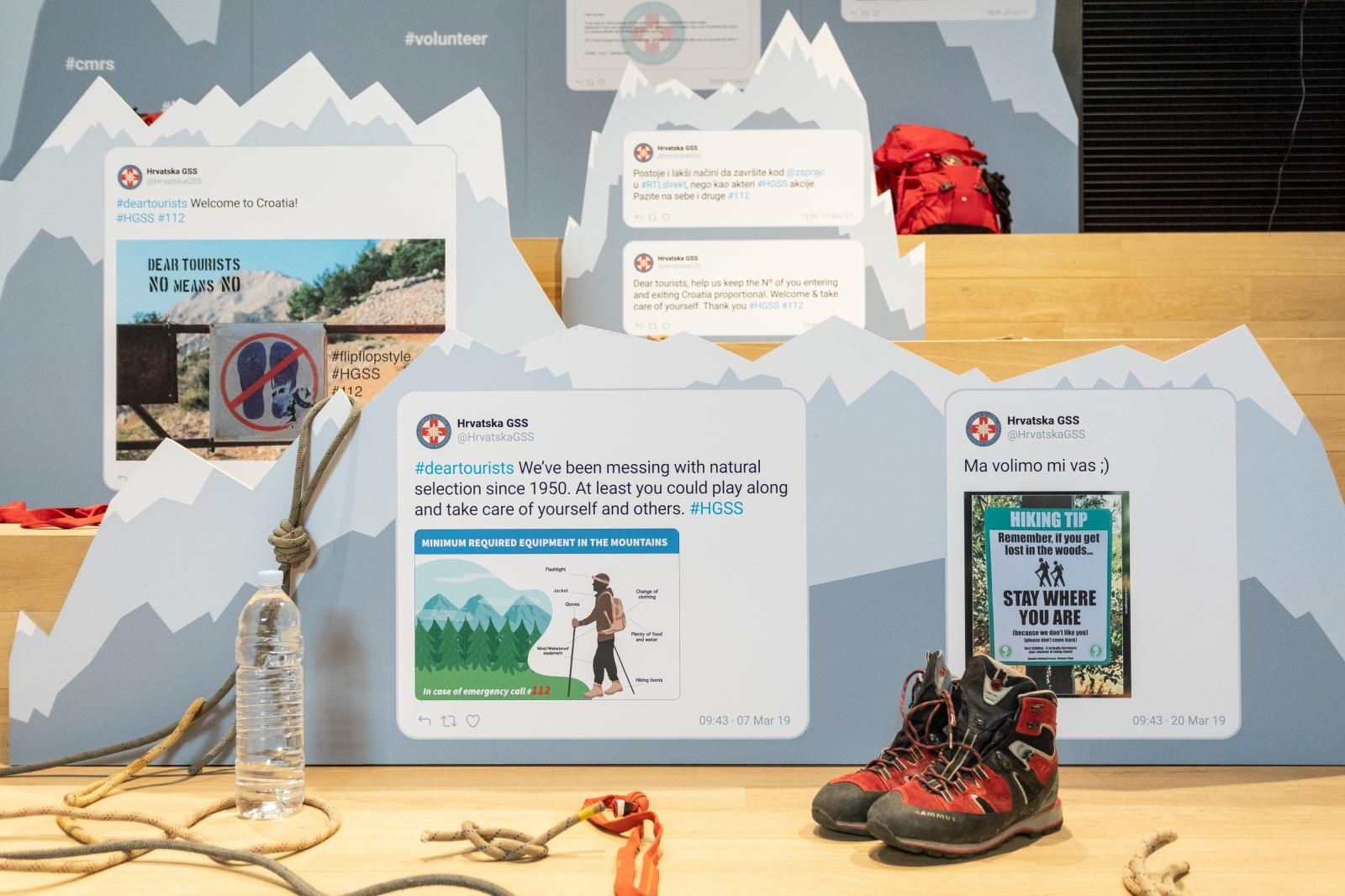
A 2020 exhibition of CMRS’ tweets. © Davor Puklavec/Pixsell
5. With the arrival of the summer season, CMRS conducts educational, often humorous campaigns on social networks aimed at raising awareness of the importance of not overestimating our abilities.
Can you single out a situation that is especially etched in your memory for any reason?
Yes, we conduct these campaigns – seasoned with a lot of sarcasm and irony – because that’s, in our experience, what makes them memorable and the best way to truly get through to people.
If I were to say something generic, like ‘Don’t forget to take a bottle of water with you on your hiking trip’, it would sound boring.
As for some, let’s say, curious situations, I would single out two events – they involved my colleagues and not me personally. Once, CMRS came across a cyclist stuck in the middle of a steep hiking trail on Hvar. It was so steep in some places that it practically stood at a 90° angle. And the man had chosen to ‘climb down’ riding his bike. He was rescued thanks to our brilliant local team, but yes, that is one situation in which a foreigner did something, well, unexpected.
Another time, we got a call about a man who had last been seen climbing Biokovo mountain. The team came, they rescued him using a helicopter – he was very dehydrated and he started to gulp down the water they had offered him. And while we were trying to persuade him to take smaller sips, he started to explain that he hadn’t been alone – as the call we had received had indicated – and that we should go back for his father, who had presumably taken shelter behind some rock, so the team couldn’t see him upon arrival. The thing is, he didn’t say anything until the helicopter was already a significant distance away from the location they had found him at!
Interventions involving foreign tourists make up only fifteen to twenty percent of all our search and rescue operations.
The rest, about eighty percent, involve local people, but quite understandably and naturally, stories about foreigners gain more media interest.
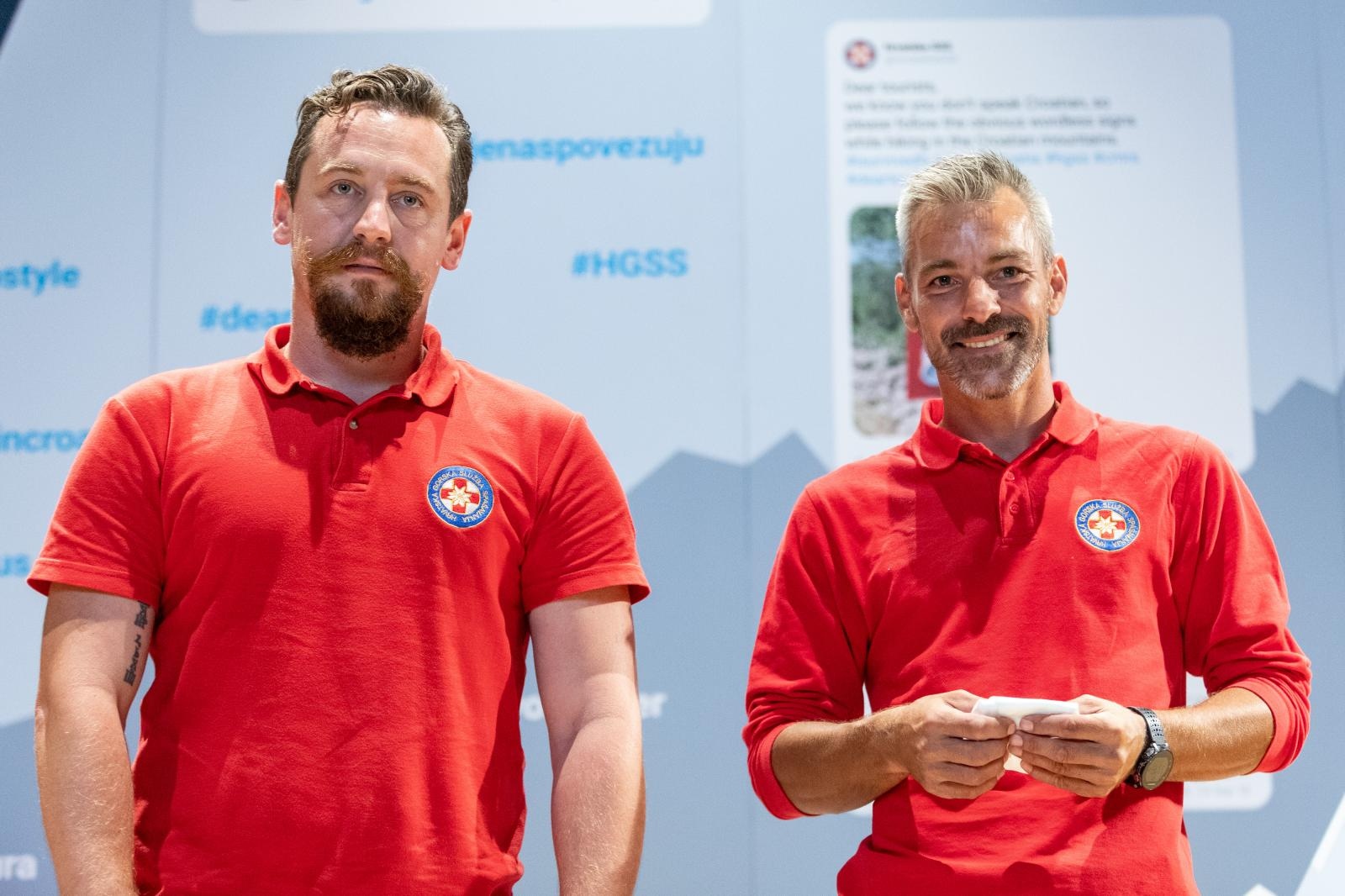
© Davor Puklavec/Pixsell
6. There is a running joke that CMRS’ tasks mainly boil down to rescuing foreigners who got stuck on a mountain because they had decided to hike in flip-flops. Is there any truth in that? Why do accidents and the need for intervention most often occur?
Like I already said, we mainly intervene in situations involving local people – but you rarely hear about an accident involving an old lady, as that doesn’t make for a sensational piece of news. The attention that the cases about foreign people attract enables us to raise public awareness and warn the people what not do.
More often than not, however, such cases turn into public campaigns which everyone uses to express their opinion of how things should be done.
The flip-flops thing is an urban – or in this case – a rural myth.
The fact is, people venture off into nature unprepared. The flip-flops case can be used as a synonym for a number of things. If you decided to climb a mountain in the middle of summer and brought only half a liter of water – it’s the same as wearing flip-flops. Or if you were to participate in Snow Queen (World Cup alpine ski race in Croatia) in the winter, wearing low-top shoes. It can’t be done.
The problem is that the people don’t educate themselves enough, don’t consult hiking manuals or look up any type of information which is easily accessible online, on the official pages of professional institutions, such as the Croatian Mountaineering Association or any other association which centers around hiking or climbing and which must stand behind what they wrote on their pages.
People – some people, that is – don’t possess certain knowledge of how to prevent an accident or what the best course of action would be. The more we know, the less likely we are to make a mistake.
Accidents happen when we overestimate our abilities and underestimate nature. The attitude ‘it’s an easy climb’ or ‘it’s not far, it’s right here, under our nose’ combined with the lack of knowledge of what to do when we get lost, get hurt, or notice something suspicious.
Accidents occur due to people’s wrong estimation in a nutshell. When I say ‘a wrong estimation’, I mean that of both subjective and objective circumstances. You can’t influence certain things – such as the weather, you can’t control a storm, but you can inform yourself and know that one is coming and decide to stay home.
That, coupled with decisions made in ignorance of rules and procedures always leads to accidents.
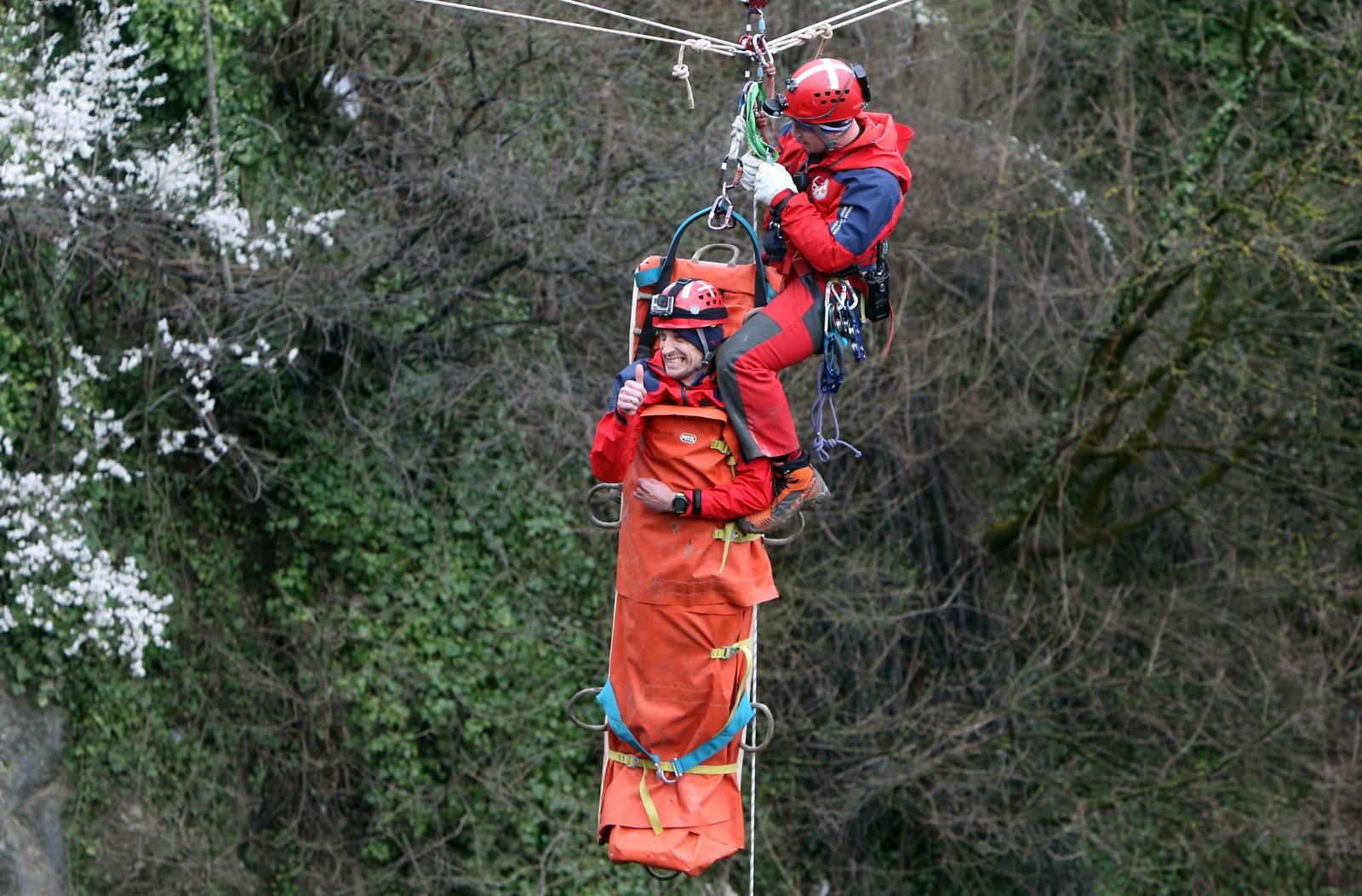
© Kristina Stedul Fabac/Pixsell
7. What does an ‘’average day’’ of a CMRS volunteer look like? Is there such a thing at all, or does each day look different, depending on the circumstances? Given that the CMRS’ headquarters are located in Zagreb, are the members expected to come to Zagreb from time to time?
Members of CMRS are volunteers. There are about forty members who are both volunteers and employees, and they perform everyday administrative tasks. When accidents occur, they must get permission from their primary employer to miss work. When they are on watch duties, they need to take time off work, use their vacation days. Rescue missions are voluntary activities that cannot be predicted and there are no set work days for that, of course. Other members who are not employed by CMRS know that they could be needed at any time. Of course, if they work as doctors, surgeons, we don’t expect them to drop everything and go on search and rescue missions, but that is why we have a large membership, to make sure everything is covered. So, people are able to plan put their days, but some things (such as rescue missions) are out of our control. We work 24/7, 365 days a year.
CMRS has twenty-five base stations and one of them is located in Zagreb. If regular members come to Zagreb, they usually come to visit Zagreb’s base station.
Our headquarters are where our administrative staff works, where we sort out the paperwork, plan out the EU-funded projects, and so on.
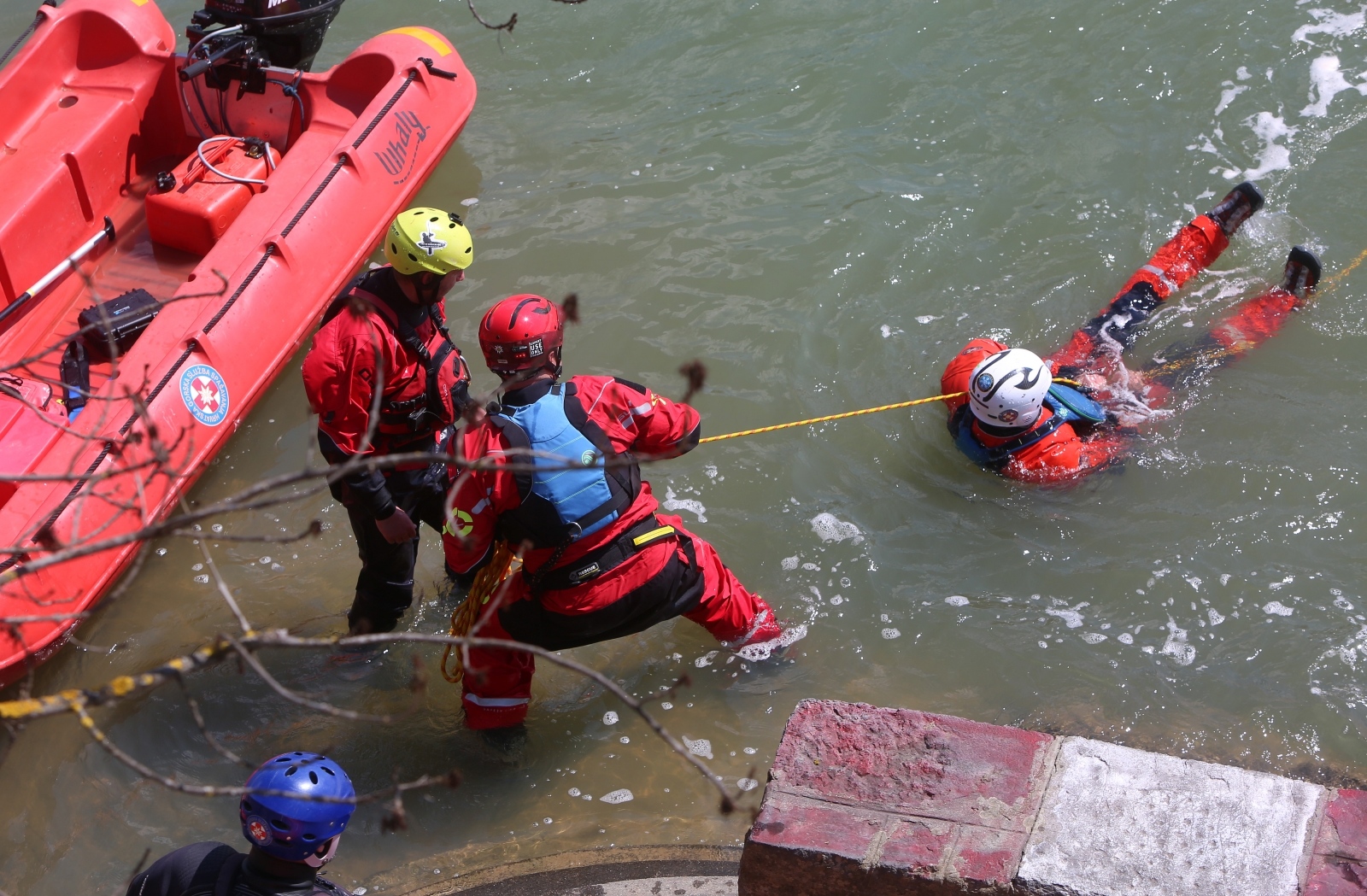
© Kristina Stedul Fabac/Pixsell
8. And finally, what piece of advice would you give to all amateur climbers and nature lovers out there who, with the arrival of nice weather, are starting to make plans to embark on adventures across our beautiful Croatia?
My message to everyone – regardless of how experienced or inexperienced they are, would be, ‘put yourself first’. Always. That means ‘put your safety first’. If you do that, if you think about what to do to make your safety a priority, it will help us, too. That is also the maxim of the Croatian Mountain Rescue Service: I put myself first, my team second and the injured person last. The reason for this is simple. If something were to happen to me, then my team can’t concentrate on the injured. By putting ourselves first, we are actually helping the person who needs to be rescued.
However, in the best-case scenario, there is no need for our intervention because the person has prioritized their own safety and taken the time to inform and educate themselves. And to us, that’s great. There is nothing we like more than when we are ‘’out of work’’. We are most glad when our role is to conduct educational workshops and other activities which don’t include search and rescue operations.
Put yourself first, stay informed, don’t overestimate your abilities – look up and observe the sky, see if there are clouds coming your way, what kind of wind is blowing, those basic things. It’s relatively easy to see what kind of weather one can expect. But, if you lack knowledge or information, you can always ask locals or check the website of the Croatian Mountain Rescue Service, the Croatian Mountaineering Association, or any other mountaineering or hiking association. Stay safe and act responsibly, that’s the key.
For more about made in Croatia, follow TCN’s dedicated page.
For more about Croatia, CLICK HERE.

